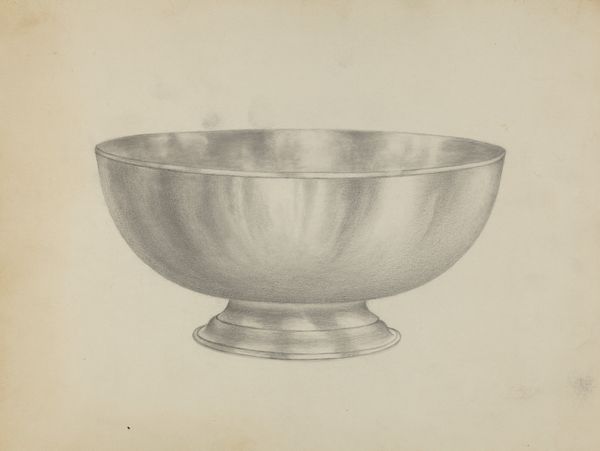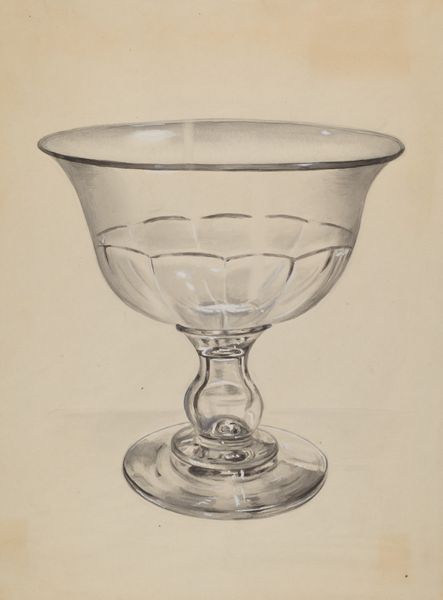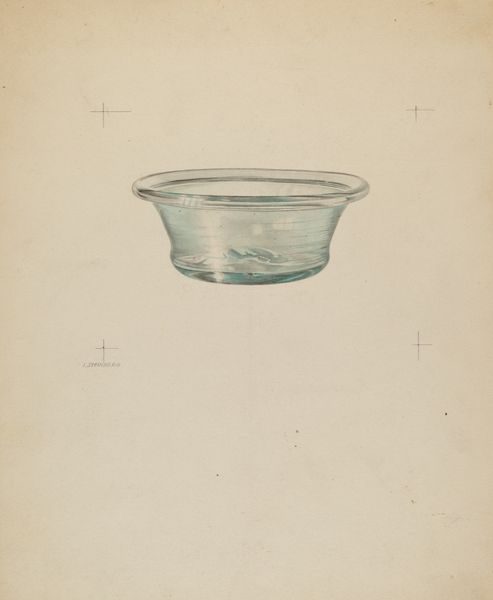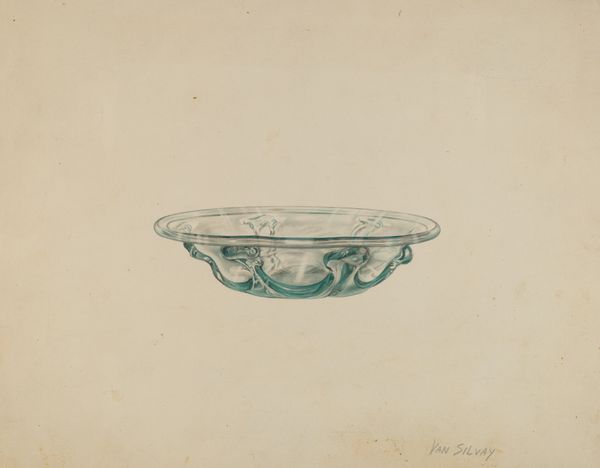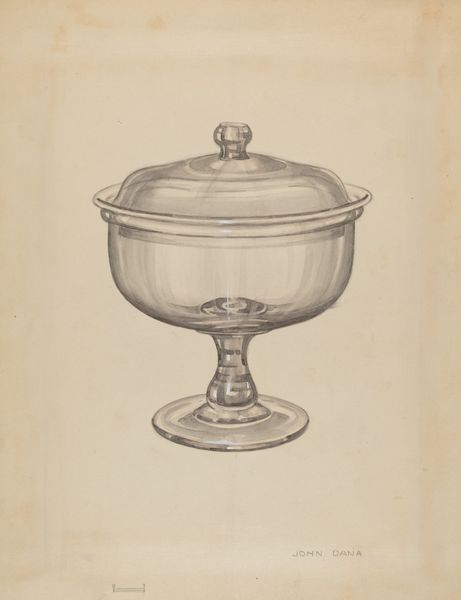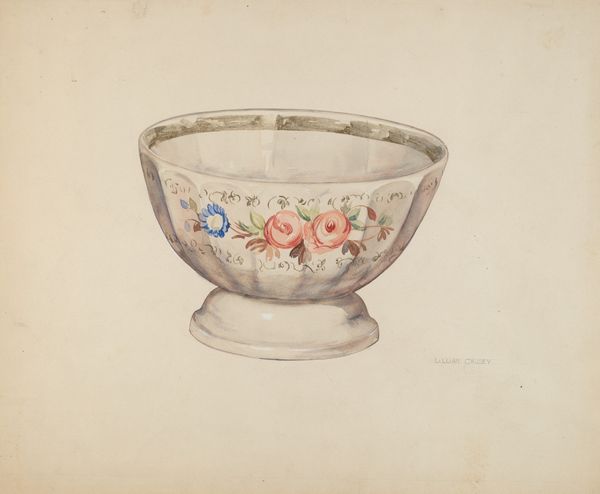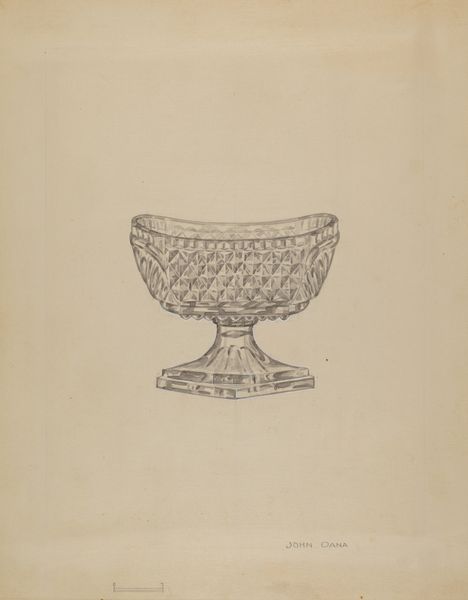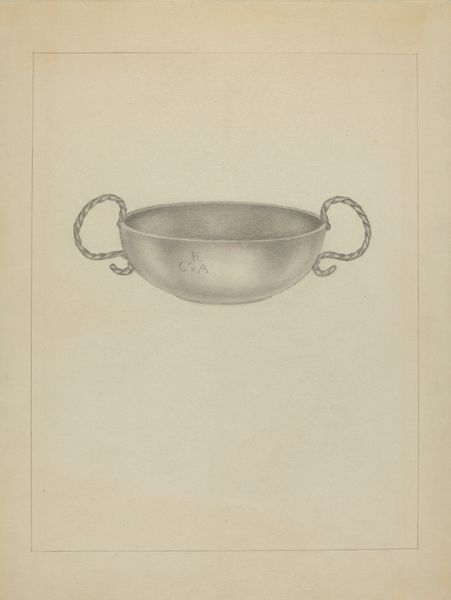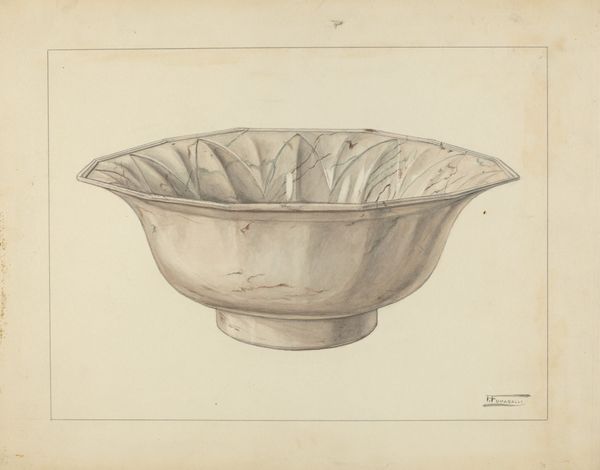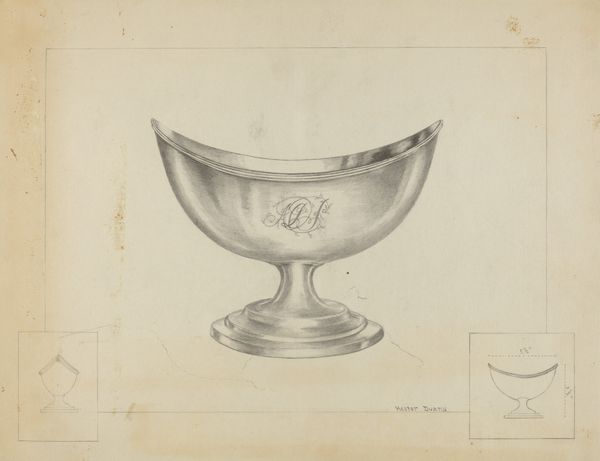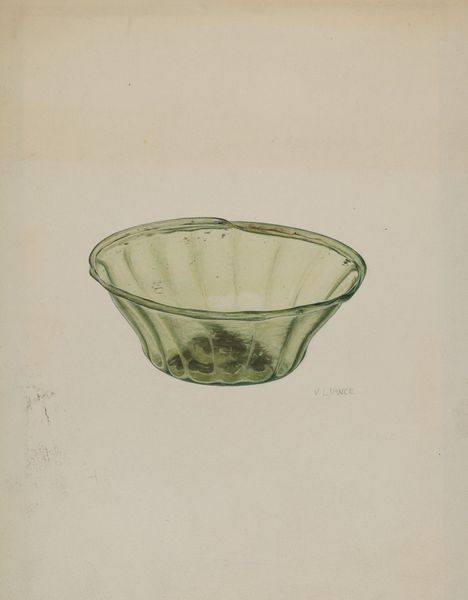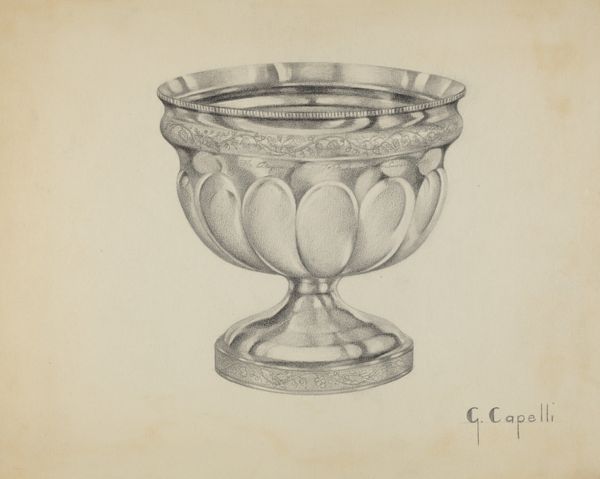
drawing, pencil, graphite
#
pencil drawn
#
drawing
#
charcoal drawing
#
pencil drawing
#
pencil
#
graphite
#
realism
Dimensions: overall: 22.8 x 29 cm (9 x 11 7/16 in.) Original IAD Object: 7 7/8" in diameter
Copyright: National Gallery of Art: CC0 1.0
Curator: I find myself drawn to the almost photorealistic qualities in this modest, yet remarkable, graphite and pencil drawing. This is “Silver Bowl” by Horace Reina, created between 1935 and 1942. Editor: It's intriguing, the meticulous detailing. The rendering of light on metal creates an almost ethereal quality, despite its grounded subject matter. The reflections, though subtle, are exquisitely captured. Curator: Consider Reina's position at the Bureau of Indian Affairs during the New Deal era. The silver bowl can be interpreted not just as a still life, but a commentary on indigeneity and the fraught relationship between Native Americans and dominant Western cultures, especially through depictions of craft and material culture. Editor: I see your point, but isn’t that assigning a symbolic weight perhaps unsupported by purely visual analysis? The form itself—the perfect geometry of the bowl contrasted with the subtle imperfections rendering light, offers a powerful experience, almost independent of any potential subtext. Curator: But consider the socio-economic pressures of the era, the commodification of Indigenous art. Is the bowl simply an aesthetic exercise, or does it engage with broader narratives of cultural exchange, power, and survival in the context of mid-20th century America? Editor: Perhaps it is both? The piece works on two distinct registers. The flawless drawing engages with artistic concerns of line and form, shadow and reflection, but could function as a symbol for commodified, indigenous craft—opening another lens of engagement. Curator: Exactly. That duality allows it to simultaneously operate as a traditional still life, as well as offering a complex commentary on cultural politics. Editor: Agreed. Thinking about Reina's compositional choices combined with its sociohistorical context allows a complex, meaningful reading. Curator: Indeed, prompting a reassessment of everyday objects and a reflection of culture and material in shaping identities. Editor: A testament to the transformative power inherent to even the simplest artistic expressions.
Comments
No comments
Be the first to comment and join the conversation on the ultimate creative platform.
